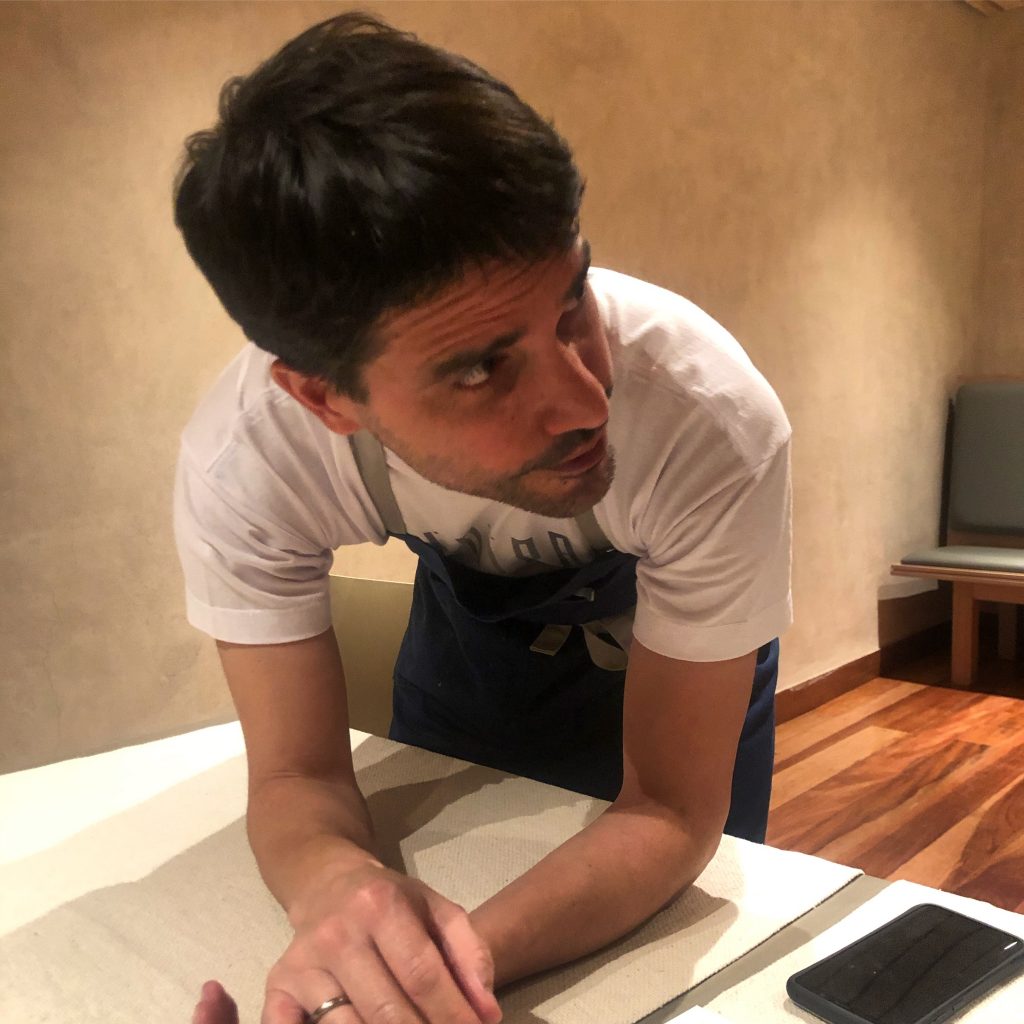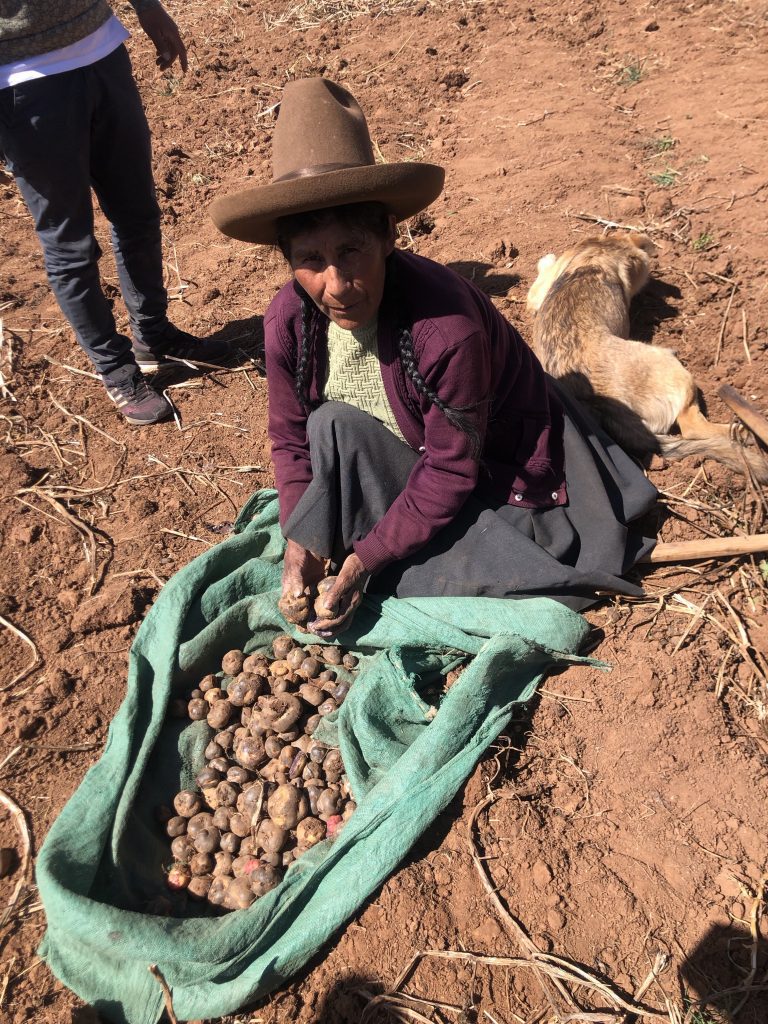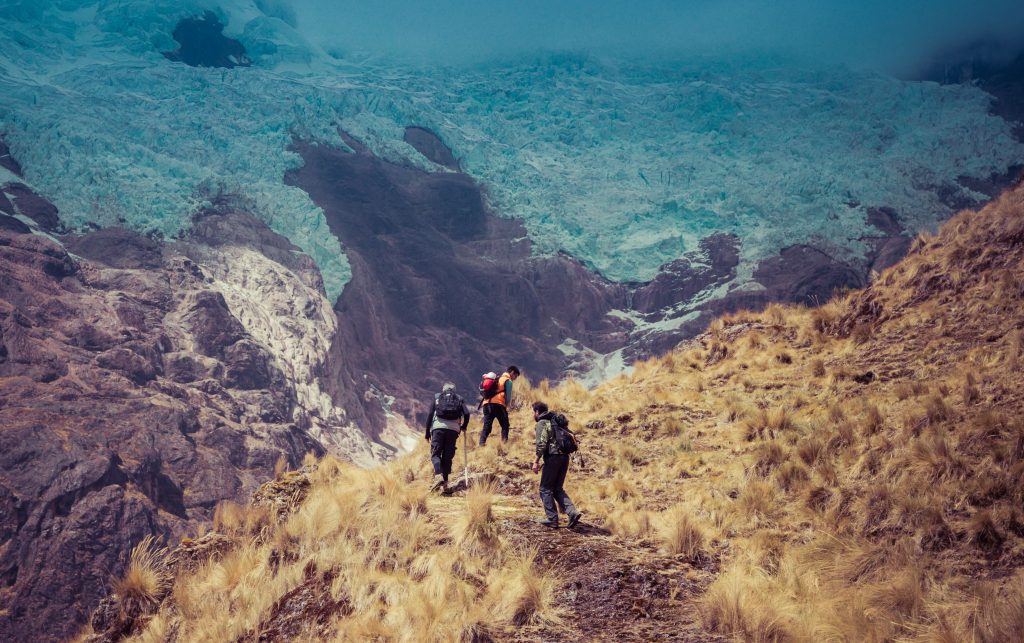
Virgilio Martinez, Peruvian chef, restauranteur, and culinary television star helms the kitchen at explora Sacred Valley. A champion of regional ingredients, he’s most famous for his Lima outpost, Central.
At a farm poised atop a hill in Peru’s Sacred Valley, farmer Manuel Choqque’s mother, clad in layers of Peruvian textiles, an oversized hat atop her head, (one that mimics the mountains that surround us, in fact ) uses a kind of pitchfork to upend the earth. She’s searching for potatoes. As she works, some children in the distance supervise two immense oxen, who soldier their way through the fields. At his mama’s side, Manuel, and another man, reach into the dirt, pulling out the potatoes, examining them above ground with what seems like religious reverence. In fervent Spanish, they discuss their finds— like archeologists conferring about artifacts. Manuel beckons to me, and puts the potatoes in my hands. Gritty and warm, they feel comforting and welcoming. I sense a kind of buzzing in my fingers, as if holding these tubers connects me deeply to the earth, as if they were the key to all belonging.
Suddenly, the other man turns. He’s Virgilio Martinez, Peruvian chef, restauranteur, and culinary television star. It’s sunny outside, but that’s not what lights up his face. Here, at Manuel’s farm, the creator of Lima’s acclaimed, Michelin-honored Central, and most recently of the Sacred Valley’s newly opened Mil, is in his element. “Come here, touch the earth,” he says to me, urging me to reach my hands into the mounds and pull out my own potatoes. I do—and he smiles. “We have hundreds, perhaps thousands of types of potatoes in this part of Peru,” he says. Meanwhile, Manuel is busy cutting some in half, showing me the bright colors inside—purples, reds— pointing out their nutritional largesse. “Antioxidantes,” he says. “Good for you. Be sure to always eat the skin.”

As we leave the field to walk toward a clearing, Martinez tells me that he’s worked with Choqque for years, supporting him in his endeavors to recover heirloom potatoes, championing his skills at marrying potato species to create optimum vitamin-rich varieties. In that role, Manuel participates in Virgilio’s personal gastronomic initiative, a prodigious gourmet effort to celebrate indigenous Peruvian cuisine by going back to basics, by elevating the trove of natural abundance in the Andes in simple, almost poetic, culinary statements. After a short walk, I join family members bearing bags of just foraged potatoes. I watch as they build a huatia—or earthen oven made of dirt and stones. Inside, the kiln, they enfold the potatoes. A swirl of smoke rises to blend with the nebulous swathe of a high altitude sky. Lazy dogs look on. A man begins to play a flute, and a child laughs. Virgilio throws some meat on the grill. I think it may be alpaca, though my friends suspects it’s another local favorite—cuyo, or guinea pig.
I’ve been awed by visits to Machu Picchu and to the verdant Sacred Valley before, but hiking at 12,000 feet toward some pre-Inca ruins called Pumamarca, overlooking a spot where the Patacancha and Yuracmayo rivers intersect, we see no crowds—not even another trekker.
The next day, I ascend a steep Andean incline with Rafael, my guide from explora Valle Sagrado, an all-inclusive hotel that operates a bit like an African safari lodge. They offer each guest a customized daily adventure, options chosen from nearly 40 unique hiking and biking outings, small group or individual excursions that take you on lesser traveled trails and to lesser known archeological sites. I’ve been awed by visits to Machu Picchu and to the verdant Sacred Valley before, but hiking at 12,000 feet toward some pre-Inca ruins called Pumamarca, overlooking a spot where the Patacancha and Yuracmayo rivers intersect, we see no crowds—not even another trekker. A few farmers work some terraced plots as we pass, goats, cows and sheep oversee our efforts. The air smells of eucalyptus. “See that moss on the rock?,” says Rafael. “That indicates how pure the oxygen is up here.” And, yes, I’m drawing all that thin, fresh air into my lungs like medicine. This moment, enwrapped by so much peaceful nature, is the cure for everything.
At the end of the day, I hike again. This time I go to the Maras salt fields, with another explora guide, Pancho, and a coterie of fellow guests from Mexico, Germany and Brazil. We trudge through be-flowered fields and meadows to a patchwork of pre-Inca era salt ponds that glimmer as they zigzag down a hillside. Here, ancient people extracted salt; here, locals still draw it from the earth via a spring water evaporation method. Highly prized, the salts are used worldwide by chefs such as Virgilio Martinez, who personally favors the pink salts for their purity. Infused in the late afternoon’s otherworldly violet light, I buy bags of salt from a vendor to take home. The salts, which come in various colors, sparkle like pouches of magic.
Later, I have the chance to taste the pink salt—Virgilio Martinez style. It’s served along side Martinez’s contemporary Peruvian dishes in explora’s dining room. In a unique collaboration, explora and Martinez have introduced exclusive new menus at the hotel, all reflective of the Sacred Valley’s natural produce. Presenting an ever changing array of regional ingredients, from corn to potatoes to quinoa, the options mirror the fare that guests might eat at Mil or Central—albeit in a simpler format. As I gobble up avocado from the valley sprinkled with Maras salt, mulit-colored quinoa with local cheese, and crispy pork with red chiles, I contemplate how Martinez and explora valle sagrado share a respect for this terroir and its people. The dishes say it all: geography, history and nature can be chewed and digested with every bite.
“Come here, touch the earth.”
IF YOU GO:
explora Sacred Valley:
Upscale, all-inclusive explora resort group has 7 safari-like lodges in remote areas across South America
Flying: LATAM Airlines, American Airlines and Delta all make travel to Peru (you’ll fly into Lima, then Cusco) easy. One bonus for Austinites: no jet lag as you stay in the same time zone.


